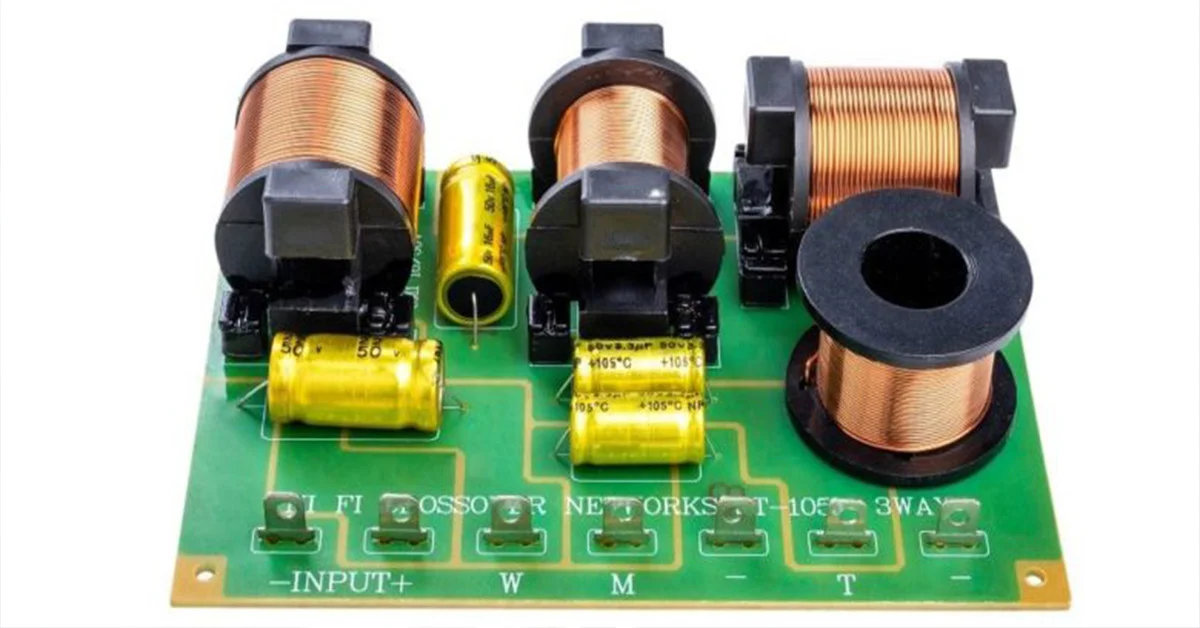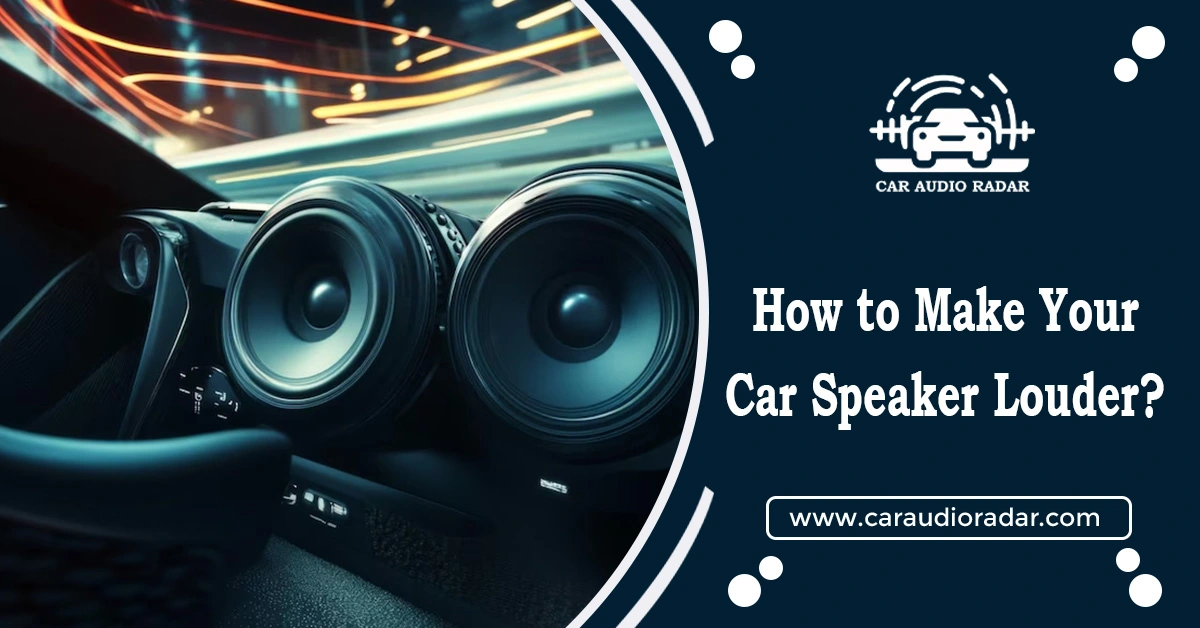
Jump to
Explore How Do Car Audio Component Speaker Crossovers Work

Want better sound in your car? Learn about how car audio component speaker crossovers work. These smart gadgets make sure each speaker gets the right sounds, making your music clear and rich. Crossovers split the music into high, mid, and low sounds, sending them to the right speaker. This keeps the music clear and stops speakers from trying to play sounds they can’t handle well.
Crossovers also keep your speakers safe. They stop too high or too low sounds from reaching speakers, reducing the risk of damage. This keeps your speakers working well for longer.
If you love car audio or want to improve your system, knowing how crossovers work is good. We’ll explain the details, helping you choose wisely and get the best sound from your car’s audio system.
Crossover Speaker Systems: Understanding How They Work
Knowing how crossover systems work is key to getting the best sound in car audio. A crossover is a part of your car’s audio setup that splits the music into different sounds, like high, midrange, or low.
It then sends these sounds to the right speaker – for example, bass sounds to woofers and high notes to tweeter. This makes sure that each speaker only plays the sounds it’s best at, making your music clear and well-balanced.
What Is a Crossover in a Car Audio System?
Crossovers in car audio are tools that decide which sounds go to which speakers. They can be passive (no power needed) or active (powered) and help improve the music by ensuring the right speakers play the right sounds.
Types of Crossovers: Passive vs. Active
Passive crossovers
These are the most common type of crossovers in car audio and don’t need extra power. They can be as simple as a capacitor or inductor connected to a speaker to send certain parts of the sound. They’re usually cheaper and easier to install than active crossovers but may lose some of the signal.
Active crossovers
These are usually placed near the amplifier and have their own power source. They can separate frequencies more precisely and give you more control over how the sound is split.
High-Pass Crossovers
These are like gates that only let high sounds through to speakers, like the high notes in music. They stop low sounds from getting to small speakers like tweeters because those speakers can’t handle deep bass well.
Low-Pass Crossovers
These work the opposite way. They only let low sounds, like deep bass, get through to speakers and keep out the high notes. This type is perfect for subwoofer, which are made to play those deep, booming sounds.
Band-Pass Crossovers
These are a mix of the first two. They let a specific band of sounds through – not too high and not too low – perfect for the middle notes like singing or guitars. They block out the very high and very low sounds. This setup is great for speakers that play the middle range of sounds.
How Do Car Audio Component Speaker Crossovers Work
How Do Passive Crossovers Work?
Passive crossovers are common in car audio setups. They’re basic gadgets that use passive parts like capacitors and inductors to split the audio into different frequency parts.
When the audio goes through a passive crossover, it’s separated into high and low-frequency parts. The high ones go to tweeters, and the low ones go to woofers or mid-range speakers. These crossovers determine which frequencies go to each speaker.
They’re easy to set up and don’t need extra power. Sometimes, they’re built into the speakers or placed between the amplifier and speakers. While they’re affordable, they might cause some loss of sound quality.
How Do Active Crossovers Work?
Active crossovers are separate gadgets that need their power source. Unlike passive crossovers, they use active parts like op-amps and transistors to split the audio.
They usually have different inputs for each speaker and multiple outputs for connecting to amplifiers and speakers. Electronic filters split the audio into different frequencies, sending each range to the right amplifier and speaker. This gives precise control over each speaker’s sound, making it more accurate and adjustable.
One big plus of active crossovers is that they don’t cause signal loss or impedance mismatch. Each speaker gets a clear signal since they split the audio before reaching the amplifiers. Active crossovers also come with extra features like time alignment and equalization, making the sound quality even better.
Benefits of Using Component Speaker Crossovers
Using component speaker crossovers in your car’s audio system offers several benefits:
- Improved Sound Quality: Crossovers send the right sounds to each speaker, stopping distortion and making the sound clearer and more detailed.
- Speaker Protection: They keep speakers safe by not letting them get sounds they can’t handle, which makes them last longer. This is important for small speakers like tweeters that can only do high sounds.
- Customizable Sound: Crossovers let you change the sound to how you want it. You can focus on certain sounds or balance everything for a better listening time.
- Flexibility in Speaker Selection: You can mix and match speakers from different brands to make your sound system with component speaker crossovers. This lets you pick speakers that fit what you like and how much you want to spend.
Tips for Optimizing Your Car Audio System with Crossovers
To get the most out of your car’s audio system and crossovers, consider the following tips:
- Choose High-Quality Speakers: Get speakers that can handle the sounds you want to play. This makes the sound better and keeps the speakers safe.
- Set Crossover Frequencies Correctly: Try different crossover settings to find the best mix between speakers. Start with settings that match the speakers’ natural abilities and adjust to what you like.
- Use Proper Wiring and Connections: Make sure all wires and connections are tight and not messed up. Bad connections can mess with the sound quality by losing signals.
Consider Professional Installation: If you need help with how to do it, think about getting a pro to help. They can set up speakers right, adjust crossovers, and make the sound top-notch.
Common Troubleshooting and Tips
Speaker crossovers usually work well, but sometimes they have problems. Here are some common issues and how to fix them:
- Distorted Sound: If the sound is distorted, it could mean the crossover settings are wrong, or something’s broken. Check the settings and connections. If it keeps happening, you might need to replace a part.
- Imbalance in Sound: If the sound is louder from one speaker than the others, check the crossover settings. Make sure they’re set right and that the speakers are in the right spot.
- Lack of Bass or Treble: If you need more bass or treble, check the crossover settings to see if the right sounds are going to the right speakers. Also, make sure the speakers can handle those sounds.
- Signal Loss or Dropouts: If the sound keeps cutting out, it could be because of bad connections or broken wires. Check all the connections and fix any that are loose. If needed, replace any damaged wires.
Tweaking Crossover Points for Optimal Audio Balance
Adjusting the crossover points can change how your music feels. It’s about finding the sweet spot where everything sounds just right.
Role of Crossovers in Subwoofers for Low Frequencies
Crossovers make sure subwoofers only play deep bass sounds. This helps them sound good without any interference.
Conclusion
Car audio crossovers are important. They make the sound better, keep speakers safe, and let you customize your car’s audio. Knowing how they work and setting them up right can make your car stereo sound awesome.
Whether you go for passive or active crossovers, get good speakers and set everything up correctly. With a good setup, your car rides will sound great. In this article, discusses in detail How Car Audio Component Speaker Crossovers Work.
Frequently asked Questions (FAQs)
Component speakers need a crossover to split the sound between the tweeter and woofer. Without it, the sound might mess up the speakers or not sound good.
In car audio systems, there are two main types of crossovers: passive crossovers which are installed between the amplifier and speaker system, and active crossovers which are typically built into the amplifier or installed separately before the amplification stage. The crossover employs high-pass, low pass, band-pass filters, or a combination of these, to separate the signal. For example, a low-pass filter will block high frequencies, allowing only low frequencies to reach the woofer.
Active crossovers require power to operate and offer more precise control over the crossover frequencies. They are ideal for advanced setups where you want to customize the audio spectrum for each speaker component.
Crossover networks help in eliminating unwanted frequencies, optimizing the distribution of audio signals to different speakers, and ensuring a smoother transition between frequency ranges, resulting in a more balanced and accurate sound reproduction.
Cooper Katzeel
Car Enthusiast
Cooper Katzel, a dedicated car enthusiast, delves into the world of automobiles and audio systems. With a deep interest in cars and a focus on superior sound, Cooper’s expertise traverses the spectrum. His journey is a delightful exploration of automotive wonders and the world of car speakers. Cooper’s passion and technical know-how make him a trusted advisor for car enthusiasts.
Follow On Instagram
Recent Posts
- All Post
- Blog
- Car Speaker
- Car Subwoofer
- Pro Tips & Guides
- Back
- Speaker Wire



Dream Life in Paris
Questions explained agreeable preferred strangers too him her son. Set put shyness offices his females him distant.


